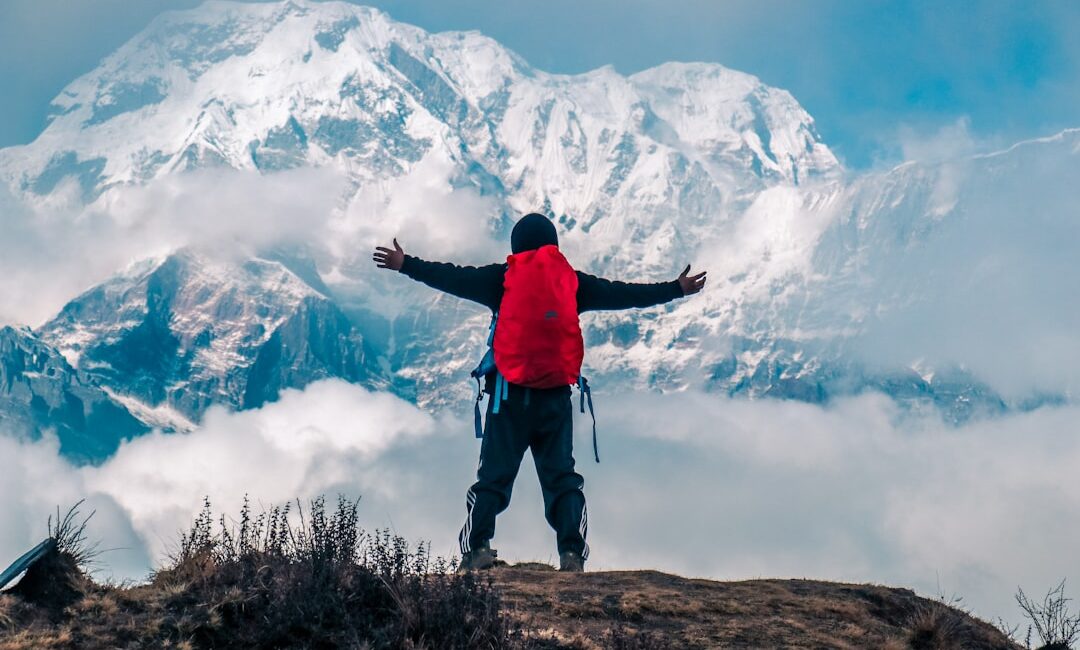Summary
Mount Rinjani, an awe-inspiring active volcano on the island of Lombok in Indonesia, stands at a breathtaking 3,726 meters (12,224 feet) and invites trekkers to explore its majestic heights. The guide to hiking Mount Rinjani in Indonesia offers a gateway to mesmerizing views, including the serene crater lake Segara Anak and the newly formed Gunung Baru, alongside rich cultural experiences with the local Sasak people. As an active volcano, Mount Rinjani frames not only the skyline of Lombok but also the hearts of those who venture to its heights, offering a unique blend of rugged peaks and serene landscapes. The mountain holds deep cultural importance for the local Sasak communities, regarded as a sacred site that influences their customs and daily lives. Hikers can choose from different trekking routes, including the scenic Sembalun Route, Senaru Route, and Torean Route, each providing a distinct experience. The guide to hiking Mount Rinjani in Indonesia also provides essential tips for preparation and safety, as well as insights into the costs and regulations necessary for a smooth and responsible hiking experience.
A comprehensive approach to hiking Mount Rinjani involves careful preparation, physical fitness, and attention to safety. Trekkers should understand the necessary fitness requirements and engage in a fitness regimen prior to the trip, as well as equip themselves with the right gear, including sturdy hiking shoes, a well-fitted backpack, layered clothing, trekking poles, and essentials such as a headlamp, first aid kit, and map or GPS. Hiring a local guide is highly recommended, as they possess in-depth knowledge of the terrain, weather conditions, and potential hazards, ensuring a safe and enriched experience. The cost of trekking Mount Rinjani typically ranges from $200 to $600 per person, depending on the length and type of trek, and booking through licensed operators ensures safety, quality services, and sustainable tourism practices. To ensure a responsible and enjoyable trekking experience, hikers must obtain a valid permit to access the trails, be mindful of their waste management practices, and respect local customs and traditions. By following the guidelines outlined in the guide to hiking Mount Rinjani in Indonesia, trekkers can embark on an unforgettable journey that honors both the breathtaking landscapes and the rich cultural heritage of this remarkable region. Ultimately, this journey is not just about the challenge, but about the experience and connection to the natural and cultural wonders of Mount Rinjani.
Ready to conquer one of Indonesia’s most stunning landscapes? Mount Rinjani, an awe-inspiring active volcano on the island of Lombok, stands at a breathtaking 3,726 meters (12,224 feet) and invites trekkers to explore its majestic heights. For adventure enthusiasts, this hike offers not just a route to the summit but a gateway to mesmerizing views, including the serene crater lake Segara Anak and the newly formed Gunung Baru, alongside rich cultural experiences with the local Sasak people.In this article, readers will discover the different trekking routes available, from the scenic Sembalun Route to the lush Senaru Route, as well as essential tips for preparation and safety on this formidable ascent. Additionally, it provides insights into the costs and regulations necessary for a smooth and responsible hiking experience. So lace up those hiking boots and get set to explore the wonders of Mount Rinjani, where every step leads to unforgettable moments and spectacular sights that will linger long after the trek is over.
Overview of Mount Rinjani Hiking Experience

The guide to hiking Mount Rinjani in Indonesia opens the door to one of the country’s most significant natural wonders. As an active volcano, Mount Rinjani frames not only the skyline of Lombok but also the hearts of those who venture to its heights. Towering at 3,726 meters, the mountain offers a unique blend of rugged peaks and serene landscapes, including the breathtaking crater lake Segara Anak. Its pristine beauty is complemented by a tapestry of diverse flora and fauna, which makes every step of the journey mesmerizing. Beyond its physical attributes, Mount Rinjani holds deep cultural importance for the local Sasak communities, regarded as a sacred site that influences their customs and daily lives. As hikers navigate through this enchanting terrain, they don’t just witness stunning vistas; they also arrive at a deeper understanding of the cultural and spiritual ties that connect the people to the land.
As hikers journey through the stunning landscapes of Mount Rinjani, they are greeted by some of the most breathtaking peaks in Indonesia. The renowned Gunung Baru emerges majestically within the crater, a testament to the volcano’s continuous activity. Surrounding the crater lake Segara Anak, the landscapes shift from lush, green slopes to stark volcanic terrain, showcasing a diverse array of ecosystems. Each step taken on this adventure reveals a captivating interplay between natural beauty and geological wonder. Beyond the physical splendor, hiking Mount Rinjani also offers a profound respect for the cultural heritage embedded in the fabric of the local communities. The Sasak people, who inhabit the regions surrounding this majestic volcano, view the mountain as a sacred entity. This rich spiritual significance adds a layer of depth to the hike, inviting trekkers to experience not just the stunning vistas, but also the vibrant traditions and beliefs that local people uphold. Through this guide to hiking Mount Rinjani in Indonesia, adventurers can immerse themselves in both the natural and cultural treasures that this iconic location has to offer.
One of the most compelling aspects of the guide to hiking Mount Rinjani in Indonesia is its ability to immerse adventurers in the rich cultural landscape of the local Sasak people. This community deeply reveres the mountain, viewing it not just as a geographical feature but as a vital spiritual symbol intertwined with their myths and identity. As hikers traverse the trails, they may encounter traditional villages where the Sasak culture remains vibrantly alive. Here, unique customs, rituals, and local crafts come to life, providing a glimpse into a way of life that has persisted for generations. Beyond the physical challenge of the trek, this connection to the local culture enriches the experience, making it not just a hike, but a journey into a world where nature and community coexist harmoniously. The significance of these interactions cannot be overstated, as they foster respect and understanding between visitors and the indigenous inhabitants, ultimately enhancing the entire hiking experience.
In summary, this guide to hiking Mount Rinjani in Indonesia highlights not just the challenge of ascending the mountain but also the richness of the experience awaiting those who embark on this remarkable journey. The picturesque landscapes and towering peaks, from the rugged trailheads to the breathtaking views at the summit, create an awe-inspiring backdrop that encourages hikers to connect with nature. Furthermore, immersing oneself in the vibrant local culture provides an enriching perspective that transcends the hike itself. As trekkers engage with the Sasak people and learn about their traditions and beliefs, they foster a deeper appreciation for the remarkable intersection of nature and human experience. Thus, exploring Mount Rinjani is not merely an adventure; it’s an opportunity to appreciate the sacred beauty of this active volcano and the vibrant traditions of the communities that thrive in its shadow. This holistic approach to hiking ensures that every adventurer leaves with lasting memories, making it a truly rewarding and transformative experience.
Choosing the Right Trekking Route

When embarking on the guide to hiking Mount Rinjani in Indonesia, selecting the right trekking route is crucial to ensuring an enjoyable and fulfilling experience. The mountain offers three main routes, each with unique attributes that cater to different trekking preferences. The Sembalun Route, located on the eastern side, is well-known for its gradual ascent, presenting stunning views of the savannah and offering a relatively less strenuous option for hikers looking to acclimatize. This route is particularly favored by those seeking to enjoy expansive vistas while navigating the incline. In contrast, the Senaru Route provides an entirely different experience, famous for its lush tropical forests and vibrant wildlife. As trekkers delve into this route, they’re greeted with cool, shaded trails and the scenic allure of the mesmerizing crater lake, Segara Anak. For those craving solitude and a rugged adventure, the Torean Route offers a less-traveled pathway, providing a truly immersive experience in nature while minimizing the encounter with larger groups.
Another popular option for those navigating the guide to hiking Mount Rinjani in Indonesia is the Senaru Route. This trail is particularly appealing for its lush tropical forests and captivating scenic views, making it a favorite for nature lovers. Hikers venturing along this path will find themselves surrounded by vibrant vegetation and the sounds of wildlife, enhancing the overall trekking experience. As they ascend, trekkers can enjoy stunning panoramas of the Segara Anak crater lake, which offers a serene backdrop at various points along the trail. The development of facilities along the route further enhances its accessibility, providing an excellent option for those seeking a moderate challenge while also ensuring a connection to nature’s splendor. Many find the colorful diversity of flora and fauna along the Senaru Route to be a reflection of the rich biodiversity within the Gunung Rinjani National Park. This creates a hiking experience that appeals not only to adventurers but also to anyone eager to appreciate the natural beauty of Indonesia.
For those seeking a more secluded experience, the Torean Route presents a fantastic alternative, making it a hidden gem in the guide to hiking Mount Rinjani in Indonesia. This less-frequented path offers a rugged yet fulfilling trek through dense forests and challenging terrains, ideal for hikers wanting to immerse themselves in nature away from the bustling crowds. Unlike the more popular routes, the Torean Path rewards trekkers with serene landscapes and tranquil surroundings, allowing for a true escape into the wilderness. Often characterized by its steep ascents and rocky trails, this route demands a good level of physical fitness but doesn’t compromise on stunning views. Hikers will be treated to breathtaking panoramas of both the crater lake and the surrounding peaks, showcasing the untouched beauty of the area. Moreover, navigating the Torean Route allows trekkers a unique opportunity to spot local wildlife and experience the diverse ecology of Gunung Rinjani National Park in a more intimate way, thus enriching their adventure.
In conclusion, the guide to hiking Mount Rinjani in Indonesia emphasizes the importance of selecting the right route for an unforgettable experience. The Sembalun Route is perfect for those who appreciate gradual climbs and panoramic views of savannah landscapes. Its gentle ascent makes it accessible for a wide range of hikers. On the other hand, the Senaru Route enchants with its lush greenery and vibrant ecosystems, catering to nature enthusiasts who enjoy cool, shaded trails while soaking in picturesque views of the crater lake. Meanwhile, the Torean Route offers a more rugged and secluded adventure for those seeking solitude. It requires a higher fitness level but rewards hikers with pristine natural beauty and opportunities to connect with the local wildlife. Each path has its own unique strengths, and understanding these differences allows trekkers to customize their adventure based on personal preferences and experience levels. By choosing wisely among these routes, hikers can fully immerse themselves in the enchanting landscapes and cultural richness that define an unforgettable trek up Mount Rinjani.
Essential Preparation and Safety Tips

When preparing for a trek on Mount Rinjani, understanding the guide to hiking Mount Rinjani in Indonesia begins with recognizing the necessary fitness requirements. Hiking this majestic volcano demands not only a sense of adventure but also a reasonable level of physical fitness. Trekkers should ideally engage in a fitness regimen prior to their trip, focusing on cardiovascular exercises such as running or cycling to enhance stamina. Additionally, strength training, particularly leg workouts like squats and lunges, can prove beneficial, as these activities prepare the body for the uphill and downhill challenges of the hike. It’s important for hikers to listen to their bodies and assess their personal fitness levels, as routes vary in difficulty. Those embarking on a trek should also consider consulting with a fitness professional or trainer for tailored advice, ensuring that they are well-prepared for the adventure ahead.
Equipping oneself with the right gear is a critical element highlighted in the guide to hiking Mount Rinjani in Indonesia. Essential trekking gear includes sturdy, waterproof hiking shoes that provide the necessary grip for both rocky ascents and slippery descents. A well-fitted backpack is also vital, ideally one that can carry at least 2-3 liters of water, snacks, and safety equipment without being cumbersome. Layered clothing ensures that hikers can adapt to changing climates—starting with a moisture-wicking base layer and adding insulating and waterproof outer layers as needed. Additionally, it is wise to include trekking poles for extra stability and to distribute weight, especially on steeper sections of the trail. Don’t forget about essentials such as a headlamp, first aid kit, and a map or GPS to stay oriented during the trek. Investing in quality gear not only enhances safety but also contributes to a more enjoyable experience, enabling hikers to fully appreciate the incredible views and cultural engagement offered by this remarkable adventure.
Aside from physical fitness and proper gear, another crucial element in the guide to hiking Mount Rinjani in Indonesia is the importance of hiring local guides. Engaging a knowledgeable guide not only enhances safety but also enriches the overall experience. Local guides possess in-depth knowledge about the terrain, weather conditions, and potential hazards, ensuring that trekkers stay on track during their adventure. These experts can navigate the trails with ease, helping hikers avoid treacherous areas, especially since trails can change due to volcanic activity. Moreover, a guide serves as a bridge to the rich cultural history of the Sasak people, offering insights that a map or GPS simply cannot provide. They can share fascinating stories about the myths surrounding the mountain, local flora and fauna, and cultural traditions, adding genuine depth to the trek. Thus, hiring a local guide is not merely a matter of safety; it’s an investment in a more authentic and memorable hiking experience on Mount Rinjani.
Finally, embracing the guide to hiking Mount Rinjani in Indonesia means appreciating the local community and the rich experience they offer. Hiring a local guide not only enhances safety but also enriches the trek with their expertise. These guides are well-acquainted with the trails, ensuring that hikers navigate safely through varying terrains and weather conditions. Their intimate knowledge of the mountain allows them to share insightful stories, cultural traditions, and the significance of the landscapes encountered along the way, offering a deeper connection to the journey. Moreover, engaging a guide supports the local economy and promotes sustainable tourism, making each step taken on Mount Rinjani a more responsible choice. In summary, potential hikers should not underestimate the importance of physical preparation, proper gear, and local guidance. By incorporating these elements, adventurers can look forward to a memorable and safe trek, fully prepared to embrace all that this majestic volcano has to offer.
Understanding Trekking Costs and Logistics

When planning an adventure, understanding the costs and logistics associated with trekking is essential. In the context of the guide to hiking Mount Rinjani in Indonesia, trekkers can expect typical price ranges to vary based on the length and type of trek. For instance, a standard three-day trek often ranges from $200 to $600 per person. These prices usually include not just the trek itself, but also provisions such as accommodation, meals, and transportation to and from the trailhead. As hikers evaluate their options, it is crucial to book through licensed operators, who are better equipped to offer safety, quality services, and knowledgeable guides. This not only ensures compliance with local regulations but also supports sustainable tourism practices. Additionally, understanding what accommodations and meal options are available can also help in planning an enjoyable and comfortable journey.
When planning a trek, understanding the typical price ranges is crucial for budget-conscious adventurers. In the guide to hiking Mount Rinjani in Indonesia, costs typically range from $200 to $600 per person, depending on factors like trek duration and service level. For instance, a standard three-day trek usually falls within this range, inclusive of necessary amenities. It is essential to book your trek through licensed operators, as they not only provide safety and quality but also help ensure adherence to local regulations. These operators often provide all-inclusive packages, which cover accommodation, meals, and even transportation to the trailhead—making planning a lot more manageable. Most trekking packages include basic yet comfortable lodging, such as tents or lodges, and nutritious local meals prepared by knowledgeable guides or porters. This ensures that hikers can focus on the adventure ahead without worrying about logistical details. Understanding these aspects of the trek will empower hikers to experience the beauty and culture of Mount Rinjani without unexpected expenses.
When finalizing the arrangements for a trek, hikers should closely examine the accommodation and meal options included in their chosen package, particularly when referencing the guide to hiking Mount Rinjani in Indonesia. Most trekking operators provide basic yet comfortable accommodations, such as tents or rudimentary lodges, strategically located along the route to enhance the hiking experience. This means trekkers can enjoy restful nights under the stars after challenging days on the trail. In terms of meals, hikers can typically expect a hearty mix of local Indonesian cuisine, often tailored to accommodate dietary preferences, including vegetarian and vegan options. Meals are prepared by on-site guides or porters and aim to provide the nutrition needed to sustain energy levels throughout the trek. Ensuring that the trek includes reliable meals and lodging can greatly impact the overall enjoyment of the journey, allowing hikers to focus on the breathtaking landscapes and cultural encounters that Mount Rinjani has to offer.
In summary, navigating the guide to hiking Mount Rinjani in Indonesia involves more than just understanding the scenic routes and stunning views. Trekking packages typically range from $200 to $600, providing trekkers with various options based on duration and services. It is crucial to book through licensed operators, who not only ensure safety and quality service but also contribute to responsible tourism practices. These local guides offer unique insights into the region’s culture and ecology, enhancing the overall trekking experience. Accommodations along the route often consist of basic tents or lodges, providing the necessary comfort after a long day on the trails. Trekkers can look forward to enjoying hearty meals featuring local cuisine, thoughtfully prepared to keep energy levels high. By understanding these costs and logistics, adventurers can plan an enjoyable and enriching trek, fully prepared to appreciate the breathtaking beauty and cultural richness that Mount Rinjani has to offer.
Environmental Considerations and Regulations

In the guide to hiking Mount Rinjani in Indonesia, understanding environmental considerations and regulations is essential for ensuring a responsible and enjoyable trekking experience. First and foremost, hikers are required to obtain a valid permit to access the trails. This not only helps regulate the number of visitors but also ensures that local authorities can maintain the paths and monitor the environmental impact. The Gunung Rinjani National Park issues these permits, and it is usually facilitated through licensed tour operators. Obtaining a permit signifies a commitment to preserving the natural beauty of the area. Alongside securing permits, trekkers must be mindful of their waste management practices. Being equipped with proper waste disposal solutions, such as reusable bags for trash, is crucial in minimizing the ecological footprint. By understanding these regulations and adjusting their behavior accordingly, hikers contribute to the conservation efforts that protect the magnificent landscapes and rich biodiversity of Mount Rinjani.
In the guide to hiking Mount Rinjani in Indonesia, understanding the necessity of permit requirements is essential for responsible trekking. All hikers must obtain an official permit before embarking on their adventure, as this contributes to the preservation and upkeep of the trails within Gunung Rinjani National Park. This permit process, typically handled through licensed tour operators, ensures that the number of trekkers remains manageable while also supporting local conservation efforts. Beyond just regulatory compliance, these permits symbolize a commitment to protecting Rinjani’s pristine ecosystems. This includes adhering to waste management practices that minimize the environmental impact of trekking. Hikers should carry reusable trash bags to collect any waste during their journey, ensuring that they leave no trace behind. Respect for local customs and traditions is equally vital. Engaging with the Sasak culture and acknowledging their deep-rooted beliefs about the mountain fosters a greater understanding and appreciation, enhancing the hiking experience. As trekkers navigate the trails, they play a role in preserving the natural and cultural heritage of this remarkable destination.
To deeply enrich the guide to hiking Mount Rinjani in Indonesia, it is essential for hikers to embody respect for local customs and traditions. The Sasak people, who reside in the region, hold Mount Rinjani in high regard. Hikers are encouraged to learn about the cultural beliefs tied to the mountain, which can enhance their trekking experience. For instance, participating in local rituals or ceremonies, when invited, can provide deeper insights into the harmonious relationship the Sasak people have with their environment. Additionally, travelers should engage respectfully with locals, seeking permission before taking photographs or entering traditional villages. Adopting a mindful attitude helps forge a stronger connection to this remarkable area while ensuring its preservation for future generations. Such an approach not only enriches personal experiences but also exemplifies responsible tourism. Ultimately, by following the guidelines outlined in the guide to hiking Mount Rinjani in Indonesia, trekkers can enjoy a fulfilling adventure that honors the natural beauty and cultural significance of this majestic destination.
In summary, the guide to hiking Mount Rinjani in Indonesia emphasizes the importance of recognizing and respecting local customs and traditions. Understanding the cultural significance of Mount Rinjani to the Sasak people can enhance the hiking experience for trekkers. Visitors are encouraged to engage thoughtfully with local communities and participate in traditional ceremonies when invited, fostering a sense of respect and connection. Additionally, promoting responsible tourism through careful waste management not only protects the natural landscape but also helps preserve the integrity of this sacred site. Hikers should carry reusable bags for trash and adhere to ‘leave no trace’ principles, ensuring that the beauty of Rinjani remains intact for future generations. Obtaining the necessary permits further underscores a commitment to environmental stewardship and responsible adventure. By following these guiding principles laid out in the guide to hiking Mount Rinjani in Indonesia, trekkers can embark on an unforgettable journey that honors both the breathtaking landscapes and the rich cultural heritage of this remarkable region.
Conclusion
Embarking on the adventure outlined in this guide to hiking Mount Rinjani in Indonesia promises not just a challenging trek, but a profound connection to nature and local culture. As you navigate the various scenic routes, from the gradual Sembalun ascent to the lush greenery of Senaru, each step unveils an unparalleled landscape. Remember, preparation is key—ensure you’re physically ready and equipped with the right gear, and don’t forget to embrace the wisdom of local guides who are the heartbeat of the experience. Respect for the environment and local customs remains fundamental to your journey, making you a steward of this breathtaking area. So, lace up your boots, respect the trails, and immerse yourself in the awe-inspiring beauty that Rinjani has to offer—it’s a trek that will leave an imprint on your heart and soul.



